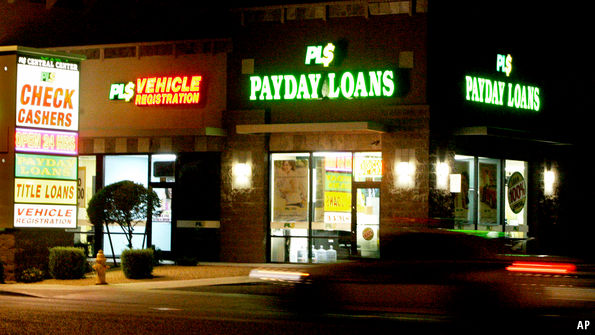
IN MAY 2013 Gloria James borrowed $ 200 from Loan Till Payday, a lender near her home in Wilmington, Delaware. Rather than take out a one- or two-month loan for a $ 100 fee, as she had done several times before, she was offered a one-year loan that would set her back $ 1,620 in interest, equivalent to an annual rate of 838%. Ms James, a housekeeper making $ 12 an hour, agreed to the high-interest loan but quickly fell behind on her payments. After filing a lawsuit in federal court, a Delaware judge ruled that the loan in question was not only illegal but “unconscionable”.
Her story is remarkably common. Americans who live pay cheque to pay cheque have few places to turn when they are in financial distress. Many rely on high-interest payday loans to stay afloat. But government efforts to crack down on the $ 40bn industry may be having an effect.
Roughly 2.5m American households, about one in 50, use payday loans each year, according to government statistics. The typical loan is $ 350, lasts two weeks, and costs $ 15 for each $ 100 borrowed. Although payday loans are marketed as a source of short-term cash to be used in financial emergencies, they are often…





